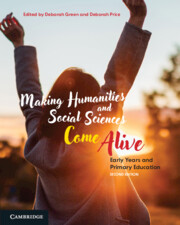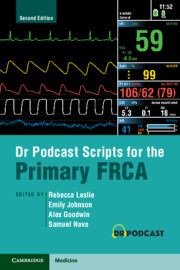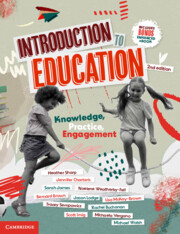Refine search
Actions for selected content:
150 results

Learning to Teach in a New Era
-
- Published online:
- 04 October 2025
- Print publication:
- 25 September 2025
-
- Textbook
- Export citation
Introduction
-
- Book:
- Learning to Teach in a New Era
- Published online:
- 04 October 2025
- Print publication:
- 25 September 2025, pp 1-8
-
- Chapter
- Export citation
Chapter 12 - Engaging with ethical understanding in the early years and beyond: The community of inquiry approach
- from Part III - Teaching and learning in HASS
-
-
- Book:
- Making Humanities and Social Sciences Come Alive
- Published online:
- 02 August 2025
- Print publication:
- 14 August 2025, pp 205-219
-
- Chapter
- Export citation
Chapter 4 - Humanities and Social Sciences in the early childhood and primary years
- from Part I - Humanities and Social Sciences curriculum
-
-
- Book:
- Making Humanities and Social Sciences Come Alive
- Published online:
- 02 August 2025
- Print publication:
- 14 August 2025, pp 57-72
-
- Chapter
- Export citation
Introduction
-
- Book:
- Teaching the Arts
- Published online:
- 28 July 2025
- Print publication:
- 06 August 2025, pp 1-2
-
- Chapter
- Export citation

Making Humanities and Social Sciences Come Alive
- Early Years and Primary Education
-
- Published online:
- 02 August 2025
- Print publication:
- 14 August 2025
-
- Textbook
- Export citation

Teaching the Arts
- Early Childhood and Primary Education
-
- Published online:
- 28 July 2025
- Print publication:
- 06 August 2025
-
- Textbook
- Export citation
2 - Sociocultural and Educational Aspects of Irish Language Acquisition
- from Part I - The Socio-educational Context
-
-
- Book:
- The Acquisition of Celtic Languages
- Published online:
- 03 July 2025
- Print publication:
- 10 July 2025, pp 29-46
-
- Chapter
- Export citation

Dr Podcast Scripts for the Primary FRCA
-
- Published online:
- 19 June 2025
- Print publication:
- 03 July 2025

Introduction to Education
- Knowledge, Practice, Engagement
-
- Published online:
- 14 June 2025
- Print publication:
- 02 June 2025
-
- Textbook
- Export citation
Chapter 7 - Disengaged behaviours
-
-
- Book:
- Student Engagement
- Published online:
- 22 December 2024
- Print publication:
- 16 January 2025, pp 160-188
-
- Chapter
- Export citation
Chapter 2 - Factors outside school
-
-
- Book:
- Student Engagement
- Published online:
- 22 December 2024
- Print publication:
- 16 January 2025, pp 30-52
-
- Chapter
- Export citation
Chapter 9 - Trauma-informed practice
-
-
- Book:
- Student Engagement
- Published online:
- 22 December 2024
- Print publication:
- 16 January 2025, pp 214-242
-
- Chapter
- Export citation
Chapter 10 - Students with emotional and behavioural disorders
-
-
- Book:
- Student Engagement
- Published online:
- 22 December 2024
- Print publication:
- 16 January 2025, pp 243-271
-
- Chapter
- Export citation
Chapter 12 - School-wide approaches
-
-
- Book:
- Student Engagement
- Published online:
- 22 December 2024
- Print publication:
- 16 January 2025, pp 295-326
-
- Chapter
- Export citation
Chapter 1 - Engagement
-
-
- Book:
- Student Engagement
- Published online:
- 22 December 2024
- Print publication:
- 16 January 2025, pp 1-29
-
- Chapter
- Export citation
Chapter 13 - Reengagement programs
-
-
- Book:
- Student Engagement
- Published online:
- 22 December 2024
- Print publication:
- 16 January 2025, pp 327-356
-
- Chapter
- Export citation
Chapter 11 - Bullying prevention and intervention
-
-
- Book:
- Student Engagement
- Published online:
- 22 December 2024
- Print publication:
- 16 January 2025, pp 272-294
-
- Chapter
- Export citation
Chapter 4 - Classroom structures
-
-
- Book:
- Student Engagement
- Published online:
- 22 December 2024
- Print publication:
- 16 January 2025, pp 77-101
-
- Chapter
- Export citation
Chapter 6 - Rules, expectations and guidelines
-
-
- Book:
- Student Engagement
- Published online:
- 22 December 2024
- Print publication:
- 16 January 2025, pp 132-159
-
- Chapter
- Export citation
